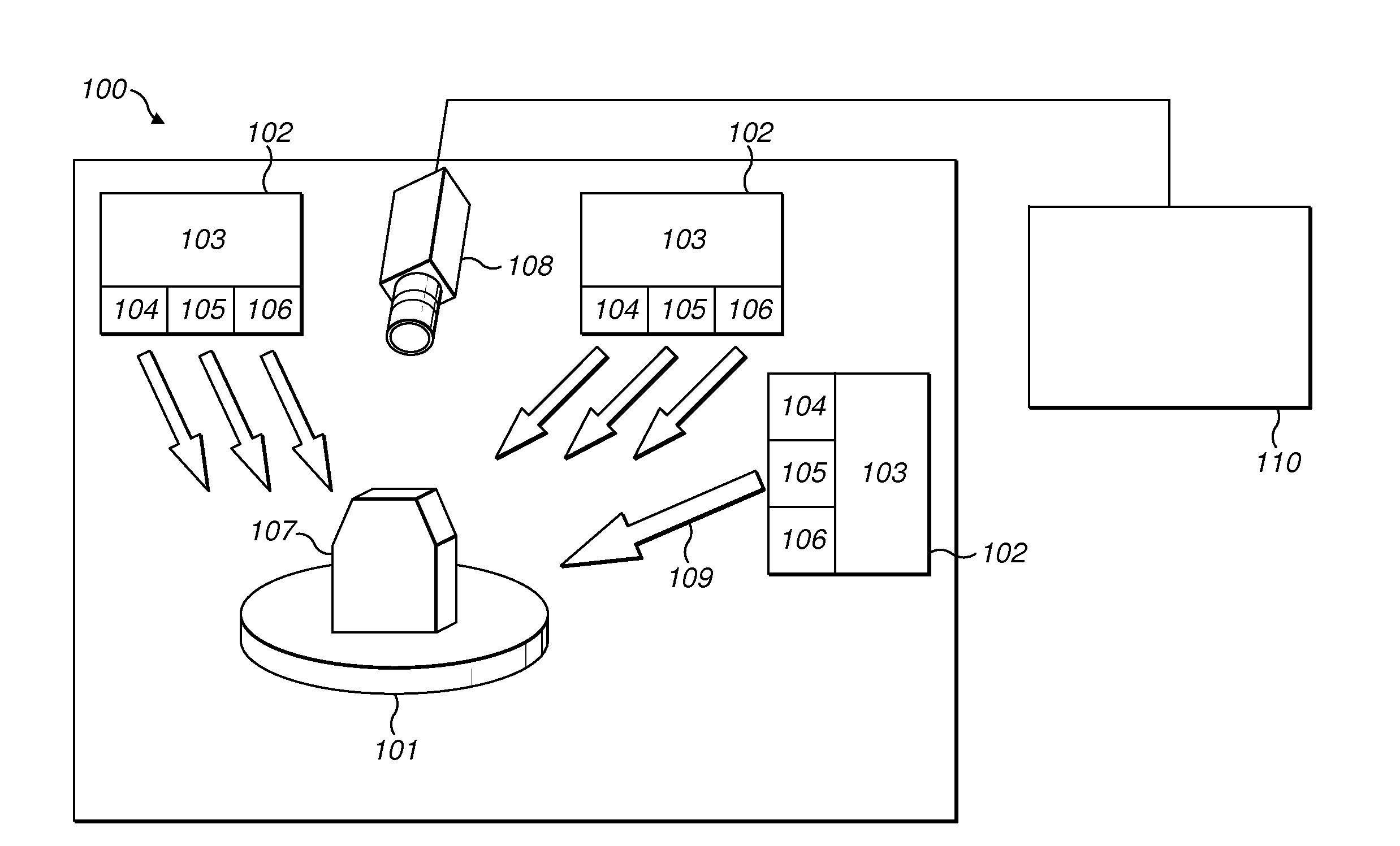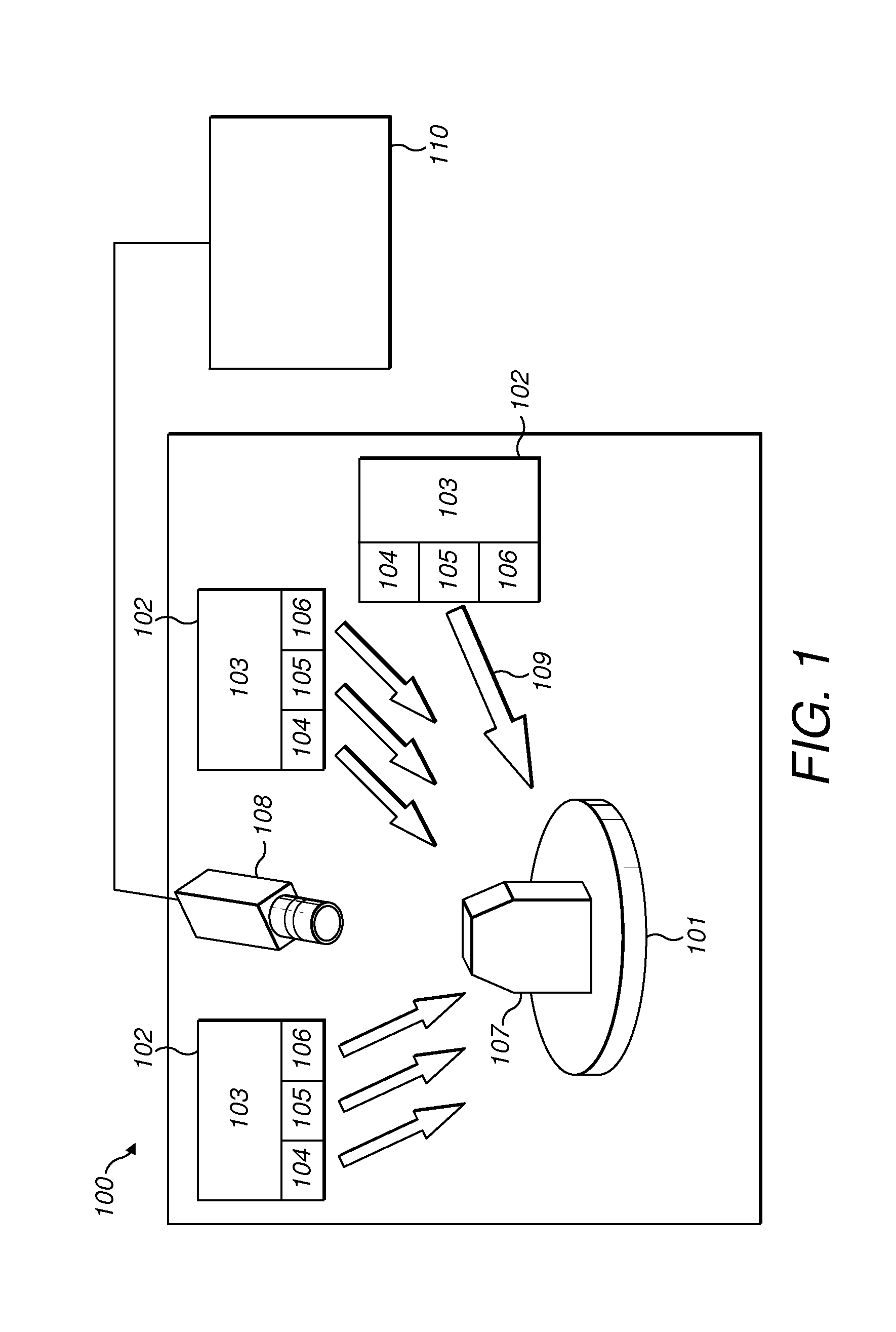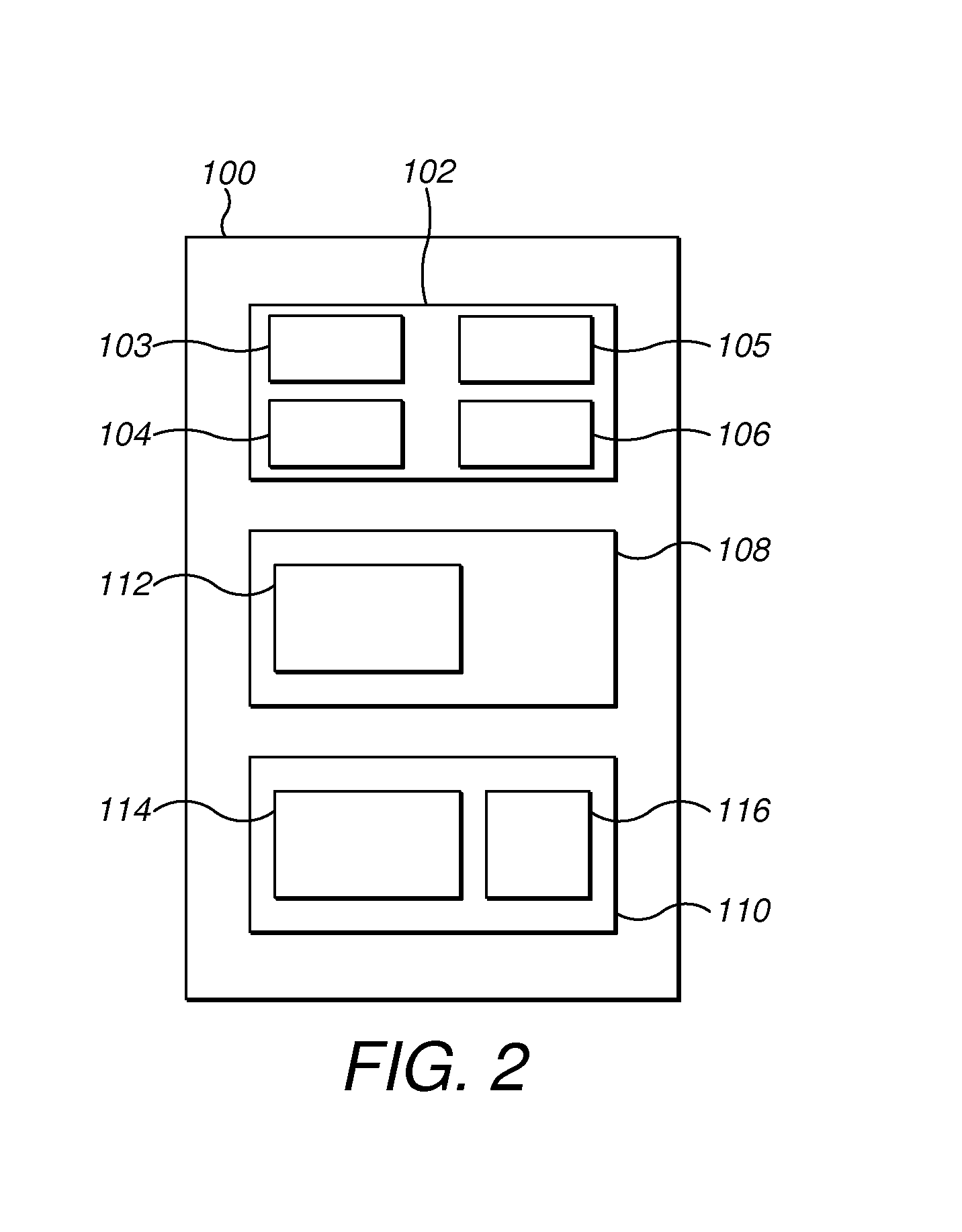Method, system and computer program product for producing a raised relief map from images of an object
a technology of object surface and raised relief, applied in image data processing, color television, instruments, etc., can solve the problems of algorithm only operating, algorithm cannot apply to such images, and the location of illumination sources is either unknown or difficult to model
- Summary
- Abstract
- Description
- Claims
- Application Information
AI Technical Summary
Benefits of technology
Problems solved by technology
Method used
Image
Examples
first embodiment
[0149]In a first embodiment, the intensity detection device 112 selects an initial image such as image 1. The intensity detection device 112 then selects a specific color channel, such as color channel R. The intensity detection device 112 detects the pixel value of each pixel in image 1 for color channel R. When considering specific examples of pixel 1 in image 1, the detected pixel values may refer to IR1(pixel1).
[0150]The intensity detection device 112 proceeds in the same manner with color channels G and B for image 1. In a similar manner, the detected pixel values may refer, for example, to IG1(pixel1) for color channel G and IB1(pixel 1) for color channel B.
[0151]The intensity detection device 112 then carries out the same steps for images 2 and 3. The intensity detection device 112 always selects corresponding pixels in all other initial images to determine the corresponding intensity of the same pixel in all the different initial images. It should be understood that the term...
second embodiment
[0231]In a second embodiment, the present invention provides a solution for considering value constraints and quality constraints for the photometric stereo model during execution of the optimization method.
[0232]In order to integrate value and quality restrictions for the photometric stereo components, the minimization functions for finding albedo values, light source intensities, light source directions and surface normals matrices take into account supplementary equality and inequality constraints. Minimization operations for each of the model components are described below.
[0233]In FIG. 5, the light source directions matrix including norm constraints should be found using the shown formula for V
subject to vk,x2+vk,y2+vk,z2=1
where k=1, . . . , ni, and vector (vk,x, vk,y, vk,z) corresponds to the lighting direction used during the acquisition of the kth image.
[0234]In order to obtain the surface normals matrix with value norm constraint and quality constraints, the minimization pr...
PUM
 Login to View More
Login to View More Abstract
Description
Claims
Application Information
 Login to View More
Login to View More - R&D
- Intellectual Property
- Life Sciences
- Materials
- Tech Scout
- Unparalleled Data Quality
- Higher Quality Content
- 60% Fewer Hallucinations
Browse by: Latest US Patents, China's latest patents, Technical Efficacy Thesaurus, Application Domain, Technology Topic, Popular Technical Reports.
© 2025 PatSnap. All rights reserved.Legal|Privacy policy|Modern Slavery Act Transparency Statement|Sitemap|About US| Contact US: help@patsnap.com



